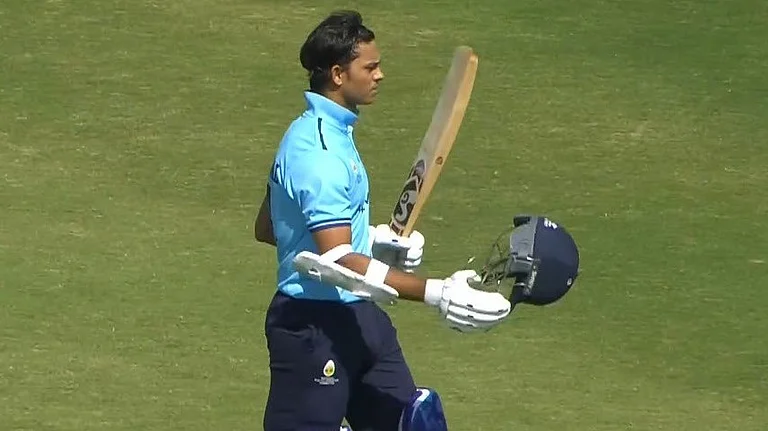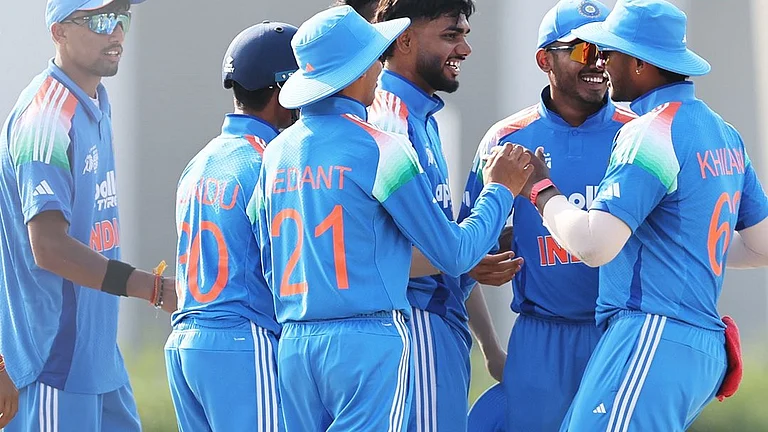WHERE on earth is the money going to come from? With the domestic kitty plunging to new lows, India's infrastructure finance needs are beginning to look mind-boggling and unquenchable. For the power sector alone, Rs 1,68,000 crore will be required in the ninth five-year plan period (1997-2002). Between now and the end of the plan in 2002, the country needs a staggering Rs 1,20,000 crore for setting up just basic telephone networks, not to mention the high licence fees. The anticipated annual spend for roads and railways is Rs 10,000 crore and Rs 7,000 crore, respectively. Upgradation of seaports would easily gobble up another Rs 5,000 crore.
"We definitely don't have domestic savings of that order, on which the investment rate depends," points out Planning Commission member G.V. Ramakrishna. "The option is to take recourse to external financing. (But) the problem here is that unlike Malaysia, Thailand, the Philippines and China, India has not devised adequate ways of attracting foreign investment in infrastructural areas."
And there is a limit to which India can depend on foreign investment and assistance. Says Javad K. Shirazi, director, resident staff in India, World Bank: "The World Bank or any other agency or group of agencies can't take up the task of filling in gaps in finance. Most of it will have to come from domestic sources, though external assistance could play a major role."
Mark Silgardo, vice-president, Kotak Mahindra Finance, points out that compared to the $30 billion foreign direct investment (FDI) in China in the last two to three years, in India FDI was $1.3 billion last year, with $2 billion expected this fiscal year. Obviously there is more potential for foreign investment, he says. So why do foreign investors balk at pumping money into infrastructure projects in India? Answers Ramakrishna: "It is possible to access outside capital easily only if the revenue stream (for investors) is stable and adequate, the tariff regime is reasonable and if there is an open, competitive bidding process." He says Indians aren't aware of "the economic realities of accessing finances; we aren't able to tailor our country's policies to meet requirements for successfully accessing external finance." Clearly, he adds, generation of revenue streams by way of user charges should suffice to meet the maintenance costs, service loans and provide an adequate return on equity.
If foreign investments are below required levels, external commercial borrowing (ECB) as a mode of financing projects is also restricted by the Finance Ministry. "For all sectors, including infrastructure, the ECB limit is $5 billion a year," notes Harindran Nair, executive director, Feedback Ventures and Collaboration Services. "Clearly, the ECB guidelines will have to be relaxed."
Add to this the fact that given the prevailing domestic liquidity crunch, the four all-India (development) financial institutions (AIFIs)—IDBI, ICICI, IFCI and SCICI—can lend but a fraction of the requirements for infrastructure. A leading finance company reckons that infrastructure finance required between now and 1999 will be at least Rs 2,78,100 crore. The total disbursement for infrastructure projects in the same period by the four AIFIs is likely to be Rs 40,000 crore, a mere 14.3 per cent of the need.
But the AIFIs themselves are not yet comfortable with financing infrastructure projects. Says Dr D. Sengupta, adviser to ICICI: "We have not yet earmarked any amount for lending to the infrastructure sector. We are trying to agree on the ground rules for lending to these projects. Different parameters, including debt-equity ratio, rates of interest, securitisation are yet to be examined. For large projects, financing will also have to be shared with other agencies like UTI, LIC and GIC." Sengupta adds that AIFIs by themselves cannot match the fast-growing needs of infrastructure projects, especially if in the same year, finance is needed for power, telecom, roads and other works.
Industry sources say that in 1994-95 all four AIFIs together loaned a total of Rs 24,000 crore for all sectors. Only a negligible amount went to infrastructure. This is expected to stay nominal in 1995-96 too. Obviously, AIFIs which traditionally disburse mid-term finances for periods ranging from five to seven years are taking time to adapt to the new scenario of long-term lending of 9-10 years for infrastructure projects. Says Sengupta: "Now we have to match this requirement with corresponding long-term borrowings to fill our kitty. We have to adjust to this new situation and work out different ways for long-term lending."
The liquidity crunch is unprecedented, says Alok Sama, executive director, Morgan Stanley. He adds: "It is going to be the toughest to arrange finance for infrastructure projects, because of the risks involved owing to the long gestation period and aggravated by the rush of new projects. The Government needs to prioritise its goals. Control of inflation by restricting money supply will further affect financing of infrastructure projects." The factors that have aided and abetted the liquidity crunch, says Harry Dhaul, director general, Independent Power Producers Association of India (IPPAI) include banning of bridge loans for primary issues, scrapping of badla, (then introduction of a not-so-attractive modified forward trading), as well as so-called anti-inflation measures.
However, former Planning Commission member Jairam Ramesh feels the liquidity crunch is being blown out of proportion by industry, which has so far been used to a good time. Says he: "There was an over-flow of liquidity in 1994-95, but now FIs and banks have become more discerningand are touching only worthwhile investment projects. No good investment projects are being put off for lack of funds."
Sengupta says the liquidity crunch has to be understood in the right perspective. Lenders can go at a rate closely related to India's savings rate. In the last two years, with the economy opening up further, the need for money has grown dramatically. The rate at which the AIFIs can sustain lending isn't going down, but the demand is shooting up more than ever, he says.
But India has also failed to utilise the full potential of infrastructure funds available with the World Bank. Thanks to policy lacunae, World Bank lending to infrastructure projects for the country constitute a mere 14 to 17 per cent of the total volume of lending to India. Says Shirazi: "Given the right policies, the World Bank could lend about $1 billion (Rs 3,400 crore) a year to infrastructure projects in India, half of its average annual lending volume of $2 billion in the country since the past five years. It is very important that India introduces major policy improvements and operating conditions to make existing stock of capital and future investments productive. This would help investors get more by way of returns. The World Bank strategy lays emphasis on productivity and efficiency. The Bank is not interested in just lending."
Shirazi reveals that in the past two fiscal years of the World Bank—between July1993 to June 1995—it did not finance any power or road projects. Infrastructure lending by the Bank included a container transport project for $94 million and two urban water supply and sewerage projects with disbursals for both totalling $468 million. The World Bank's reluctance to assist with funds for major power and roads projects is not surprising. It is well known that rates of return on capital in the case of most state electricity boards (SEBs) is negative. "Hence there is very little point in pouring in money here," says Shirazi. Improvements in operating efficiency of power plants, improvements in setting the right prices and collecting electricity tariffs, reducing transmission and distribution losses—these become absolutely essential to justify new investments in the power sector, he says. However, as Orissa has become the first state to take steps to improve its power sector, it will soon be receiving a $350-million World Bank loan for a major overhaul in that area. "Other states are also initiating reforms. If all these reforms take off, then substantial financial assistance from the World Bank is assured," Shirazi adds.
Ramakrishna is not so optimistic: "In the case of power, most investors find the tariff structure uneconomical, with a large proportion of power going to agricultural users for whom power tariffs vary from zero to less than a rupee. Any investor who supplies 30-40 per cent of power for agricultural users where tariff is less than the cost of generation is in a losing situation." Little wonder then, when there is talk about privatising power distribution, no parties show interest because of the unremunerative price structure. The Government does not even have a clear-cut policy on privatisation of the power sector, says Ramakrishna. Ditto for roads, seaports and airports.
The National Telecom Policy on privatisation is under implementation. But it is too early to say what the results will be."My personal view is that lots of people made extravagant bids for telecom projects," says Ramakrishna. Accessing enough finance to pay those huge licence fees will definitely not be easy. All eyes are now on the proposed Telecom Regulatory Authority of India (TRAI). But if TRAI is not set up as per expectations of foreign and Indian investors, it could throw the whole process of privatisation off gear. Like in telecom, power too needs an independent Tariff Regulatory Board to take care of both producers' and consumers' interests. Butthe lack of political will is the major hurdle here, says Ramakrishna.
The prospects are frightening. Says IPPAI's Dhaul: "New generating capacities to take care of the shortfall of 20,000 MW that the country faces now should be created on a war footing, which alone would require an investment of Rs 85,000-100,000 crore. The Government, as far as I know, has no plans to mobilise resources of this magnitude, either internally or externally." The currently installed capacity of 88,000 MW implies a 30 per cent shortfall in power. This could go up to 80 per cent and power will then become a luxury item, if urgent steps are not taken, warns Dhaul.
As things stand today, the contribution of the Asian Development Bank (ADB) to financing Indian infrastructure projects is quite impressive. The ADB is providing finance of $50 million for the AES Ib Valley project in Orissa, as well as a $120-million loan for the Balagarh thermal power project in West Bengal. An ADB loan is also under consideration for the Cogentrix power project in Karnataka. In the roads sector, the bank is considering finance for the Delhi-Noida bridge over Yamuna. The ADB also has a credit line for on-line infrastructure projects to the tune of $300 million to ICICI, IFCI and SCICI. An equal amount will come from a Japanese lending agency. Projects to be covered will include power, telecom, roads, ports. But the ADB would also like the Indian power sector to undergo reforms, including tariff rationalisation and restructuring of SEBs, says a bank official.
Shirazi says that another important sector where the World Cup could play a signifi-cant and catalytic role is the roads sector. The condition and area covered by roads in India fall far short of what is needed to support rapid economic growth and expansion of trade. In the roads sector, international experience shows private investment won't come in a big way because financial payoff to private investors is limited. The build, operate and transfer (BOT) scheme can be availed of to a very limited extent for densely travelled segments. Adds Ramesh: "The key to getting private sector participation in road projects is to allow them to develop real estate like motels and other facilities on the highways because they cannot make money on roads." The private sector would have to mobilise Rs 3,000 crore to Rs 4,000 crore a year for roads, he says.
Sea ports also should be accorded top priority by India, as they serve as a major link between domestic and international economies, says Shirazi. They need improvements in operating procedures so that the capacity of ports could be better utilised. Certain amount of investment in expansion to allow handling of bulk cargo such as wheat and rice would have to be undertaken. Private investment plays a major role not only in physical structure but also in reviving the ports. Ramesh notes that major ports like Nhava Seva are trying to privatise some operations. In Gujarat, about $1 billion has been invested by private parties, including foreign investors, on the port of Pipavav..
Ramesh says a beginning has been made in airport privatisation. Ahmedabad and Lucknow airports will be privatised. The Bangalore international airport to come up in three years will be built at a cost of $3 billion by a US-Singapore-Tata consortium.
But is all this a mere flash in the pan? "On the whole, the Government policy on infrastructure can be termed as haphazard, uncoordinated and unproductive," says Ramakrishna. And unless the Government acts quickly, infrastructure may well turn out to be the Achilles' heel of the Indian economy.


























